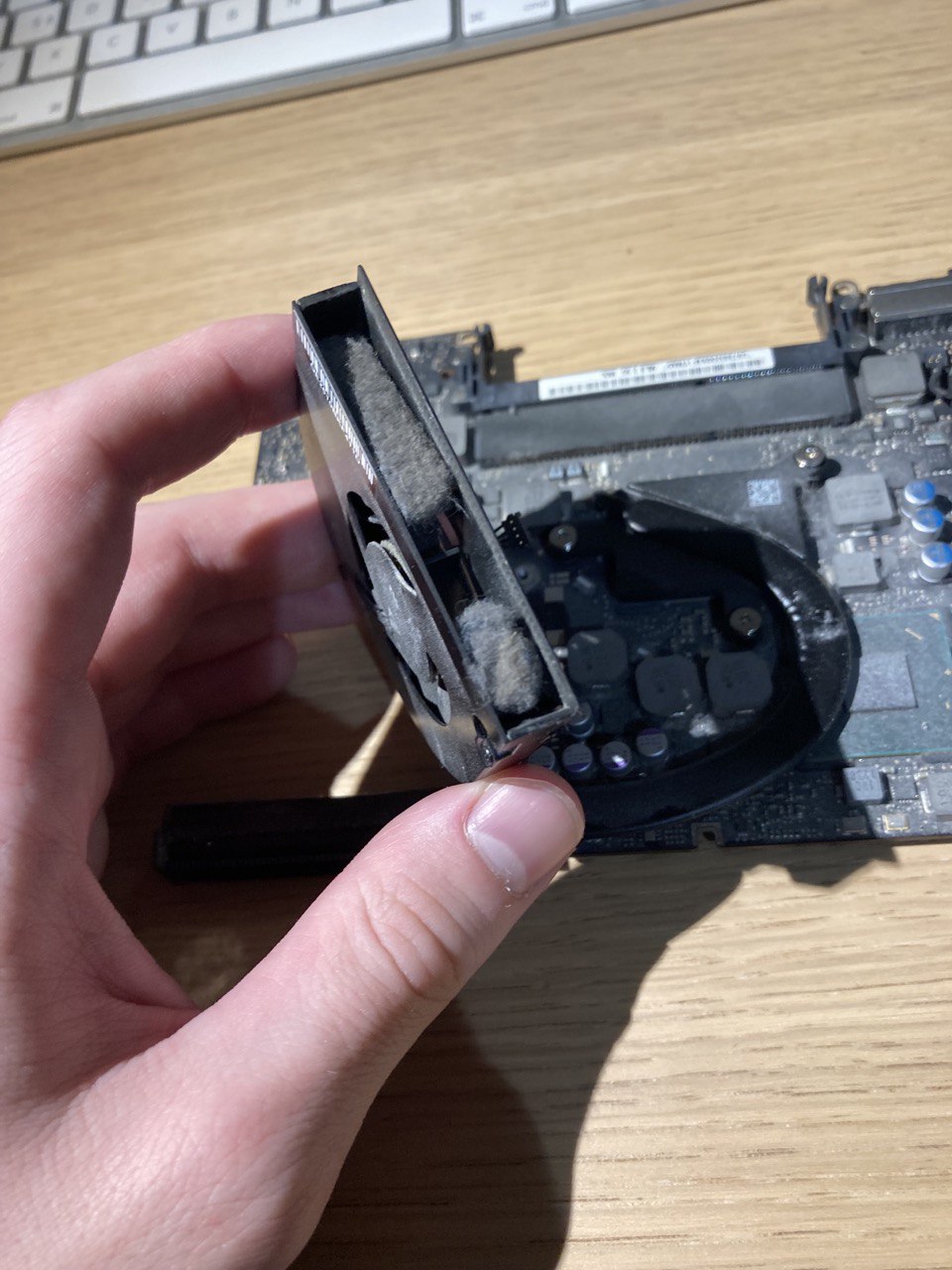motivation
As I primarily used Lenovo Thinkpad p14s as my personal/business work station at a time, I decided to clean and dedust the whole machine. Then, finally try to install GNU/Linux Fedora operating system as Apple dropped macOS support for my old MacBook Pro (MBP) mid-2012 13" non-retina machine.

DVD-ROM drive removal
Personally I bought this second-hand machine in around 2014, while wanting to continue using CD/DVD drive (this model, mid-2012 MBP, was the last one where Apple’d offered a builtin DVD drive). Since I needed it no more in the year of 2022 (used very sparsely and rarely), I went to removing it from the case (weight drop of about 120 grams, stonks!).
Note: after some time has passed, I have to admit, that the laptop is not that well-balanced as it used to be.
heatsink and thermal paste
To remove, clean and re-paste the heatsink, one needs to remove virtually all the machine’s parts, as heatink sits under the keyboard, sitting on the opposite site (much inner like keyboard) of the back of opened case.
references
foot tips
As time goes, laptop foot tips tend to wear off quickly, resulting in falling off the base and getting forgotten deep down one’s bag. I tried replacing them many times, because when all are gone, the aluminium case gets scratched pretty badly.
references
reassemblement
Reassemly was not as easy as deassemlement, I often mismatched screws to mount back some parts, resulting in aluminium case being nearly pierced by near the power button.
linux installation
As far as macOS support for old hardware is concerned, you once get into a position of an too-old-hardware for our newest version. The last macOS version I had been allowed to install was Catalina (macOS 10.15) — released in October 2019. I had been waiting for this “opportunity” to give linux on mac a try. Therefore this year (2022) I decided to do a huge maintainance service myself, ending in Fedora 34 Workstation (GNU/Linux) being installed on my old mac.
The first problem was to hit the right keys when one needed to enter Mac’s boot menu to load Fedora Live from the USB key. I was successful (eventually), and the installation was pretty simple and smooth. It installed Gnome Desktop Manager by default, even with the trackpad support for MBP’s gestures. But I wanted to install and configure (ok, still configuring til today) i3 window manager as I used it on that Thinkpad mentionend above.
Also, I needed to install some other tools for Linux on Mac like mbpfan/fancontrol to seize the control over Mac’s fans more efficiently; iwifi newer drivers; flatpak for some not-in-the-standard-repos packages (like Spotify, Telegram Desktop and Discord apps).